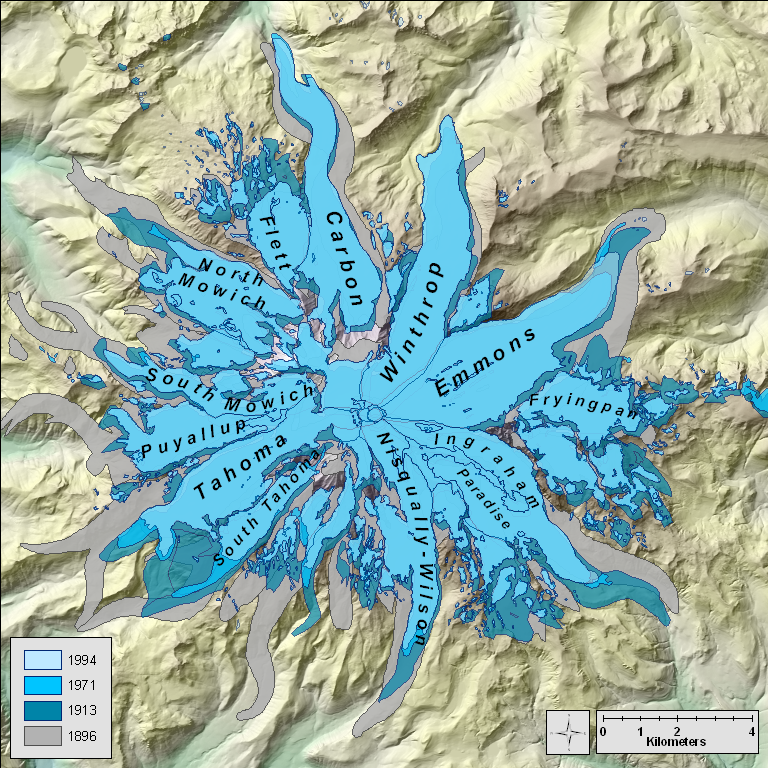Actualité volcanique, Articles de fond sur étude de volcan, tectonique, récits et photos de voyage
Par Bernard Duyck
Mount Rainier, the highest point of the volcanic Cascade Range, is a stratovolcano which rises to 4,392 meters. Its current vertex is wearing two partially overlapping craters.
The Global Volcanism Program describes an extensive active hydrothermal system, which causes periodic melting glaciers covering its sides and place, in the summit ice cap, an elaborate network of ice caves. Hydrothermal alteration of the upper parts of the volcano contributes to its structural weakness.
The first description of the caves apical is made in 1870 by H.Stevens and Ph.Van Trump. "At dusk, we were delighted by jets of vapor amount rocky edge. Heat had dug an opening in the snow " . They settled in for the night ..." and spent a miserable night, frozen on one side, and in a bath of sulphurous fumes of the other. "
Twin brothers Whittaker ventured into the caves in 1954, but quickly made a U-turn for fear of toxic fumes.
Lou Whittaker returned in 1970 with a respirator used by firefighters, crawling "through the eye of the needle", a small opening on the south side of the crater. For several decades, the Whittakers guided visitors through the caves under the Paradise Glacier ... but describe the apical caves as "dark and smoky, with a hint of sulfur, but with a breathable air."
In the 70s, during an expedition called Project Crater, Lokey and a team of young climbers and scientists camped for weeks at the top, where they found the remains of the expedition of the 19th century.
Mt Rainier - Zoe Harrold, specialist microbes in extreme environments, takes water samples from the lake recently discovered - photo Francois-Xavier De Ruydts / Special to The Seattle Times - more great photos on the site references.
The Seattle Times reports the expedition of 2004, by Lokey and his team, this time equipped with modern means of survival and monitoring.
A storm will force a part of the team to enter the nearest summit cave ... the air is heated to 40 ° C by the fumarole but harmful gases not detected, and they set up camp. A map is established by means of lasers and inclinometers, and a lake is discovered, not yet listed ... he was named Lake Adélie because the azure water reminds to Eddy Cartaya the blue eyes of the penguin of the same name. A team member shows signs of pulmonary edema and the expedition should be discontinued. At the size and complexity of the passages, another mapping expedition is planned for 2015.
Lokey's group, on its side, is sampling gas, particularly the helium contents, missing data for Rainier, and could indicate possible magma movements.Samples taken from lake water taken, from surrounding mud, and ice are also performed.
Interesting benefits are expected from samples examinations, the combination of heat and volcanic gas, cold water and frozen ground would be similar to the conditions for the emergence of life on Earth.
Sources :
- The Seattle Times- Under Rainier’s crater, a natural laboratory like no other - link
- Science direct - Fumaroles in ice caves on the summit of Mount Rainier—preliminary stable isotope, gas, and geochemical studies – by D.R. Zimbelman, R.O. Rye, G.P. Landis. - link 1 - link 2
- USGS - Living with an active volcano in your backyard - An educator guide with emphasis on Mt. Rainier.
Thème Magazine - Hébergé par Overblog







